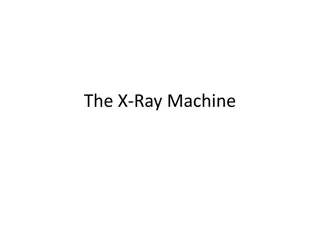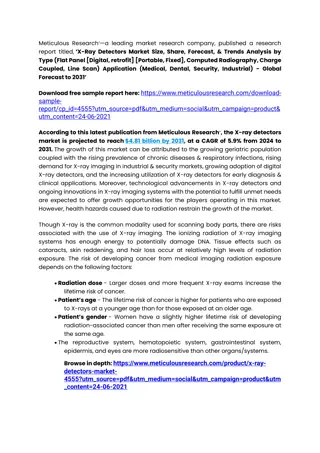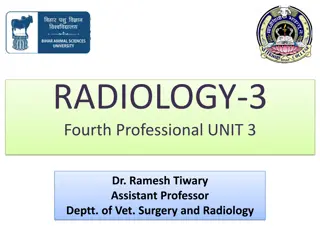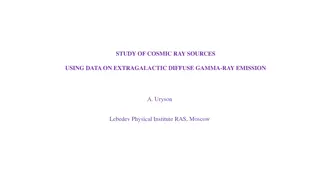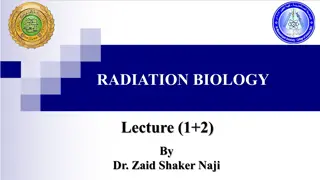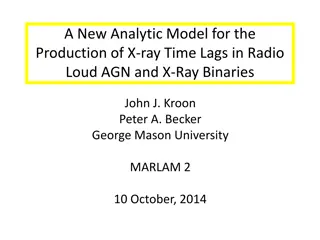The Discovery and Impact of X-Ray by Wilhelm Conrad Rontgen
Wilhelm Conrad Rontgen accidentally discovered X-rays in 1895, leading to a revolutionary way of seeing inside objects and the human body. X-rays are powerful electromagnetic radiations that penetrate matter and have diverse applications in medicine and industry.
Download Presentation

Please find below an Image/Link to download the presentation.
The content on the website is provided AS IS for your information and personal use only. It may not be sold, licensed, or shared on other websites without obtaining consent from the author.If you encounter any issues during the download, it is possible that the publisher has removed the file from their server.
You are allowed to download the files provided on this website for personal or commercial use, subject to the condition that they are used lawfully. All files are the property of their respective owners.
The content on the website is provided AS IS for your information and personal use only. It may not be sold, licensed, or shared on other websites without obtaining consent from the author.
E N D
Presentation Transcript
RONTGEN & X-RAY By: Dr.G.Chitra Parvathy, Dept.of History, T.D.M.N.S. College, T.Kallikulam.
On November 8, 1895, Wilhelm Conrad Rontgen discovered an image cast from his cathode ray generator, projected far beyond he possible range of the cathode rays. (accidentally)
Further investigation showed that the rays were generated at the point of the contact of the cathode ray beam on the interior of the vacuum tube, that they were not deflected by magnetic fields, and they penetrated many kinds of matter.
A week after his discovery, Rontgen took an X-ray photograph of his wife s hand which clearly revealed her wedding ring and her bones.
Rontgen named the new form of radiation X- radiation or unknown ). X-ray in short (X standing for
X-rays are powerful invisible rays that can pass through various objects and that makes it possible to see inside things, such as a person s luggage or the human body.
X-rays are any of the electromagnetic radiations that have an extremely short wavelength of less than 100 angstroms and have the properties of penetrating various thickness of all solids, of producing secondary radiations by impinging on material bodies, and of acting on photographic films and plates as lightdoes.
X-rays are roughly classified into two types: soft X-rays and hard X-rays. Soft X-rays fall in the range of the EM spectrum between (UV) light and gamma-rays. Soft X-rays have comparatively high frequencies about 3 1016 cycles per second, or hertz, to about 1018 Hz and relatively short wavelengths about 10 nanometers (nm), or 4 10 7 inches, to about 100 picometers (pm), or 4 10 8 inches. (A nanometer is one-billionth of a meter; a picometer is one- trillionth of a meter.)
Hard X-rays have frequencies of about 1018 Hz tohigher than 1020 Hz and wavelengths of about 100 pm (4 10 9 inches) to about 1 pm (4 10 11 inches). Hard X-rays occupy the same region of the EM spectrum as gamma-rays. The only difference between them is their source: X-raysare produced by accelerating electrons, while gamma-rays are produced by atomic nuclei.
ADVANTAGE OF X-RAY
X-rays help us confirm the presence or absence of disease or injury. It is an essential tool for doctors so that they can use it to investigate the cause of our symptoms.
DISADVANTAGE OF X-RAY
X-rays makes our blood cells to have higher level of hydrogen peroxide which could cause cell damage. A higher risk of getting cancer fromX-rays. The X-rays are able to change the base of the DNA causing amutation.



